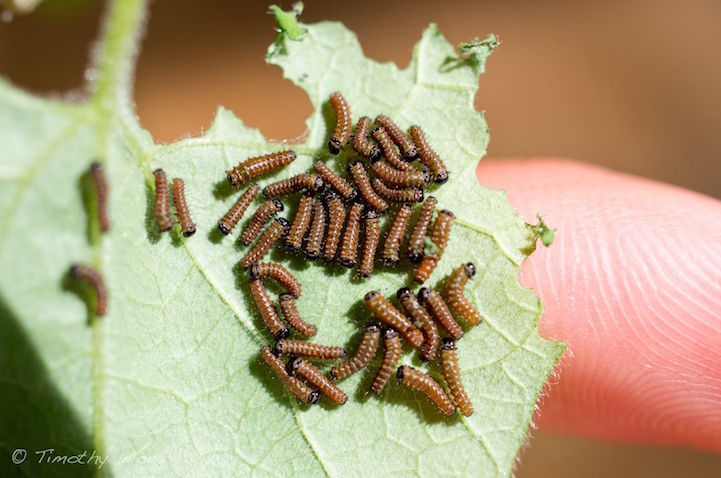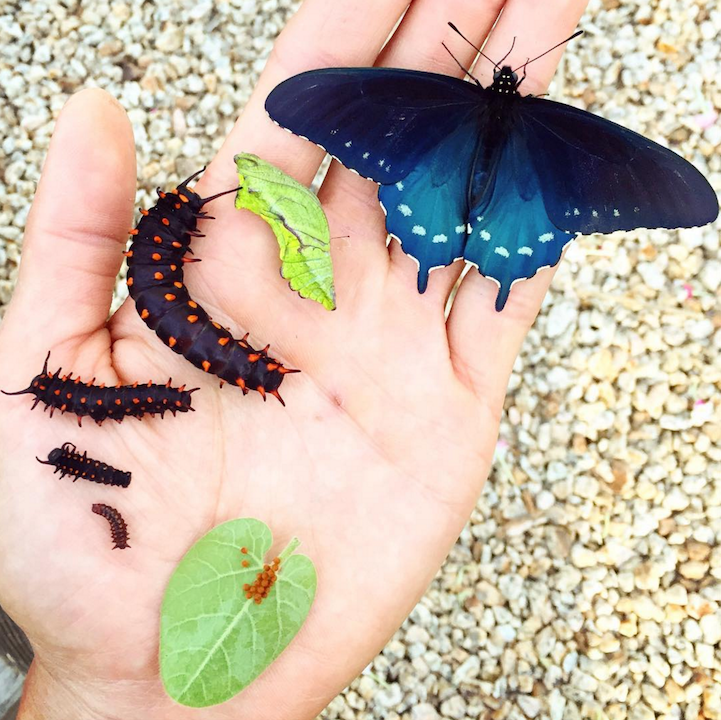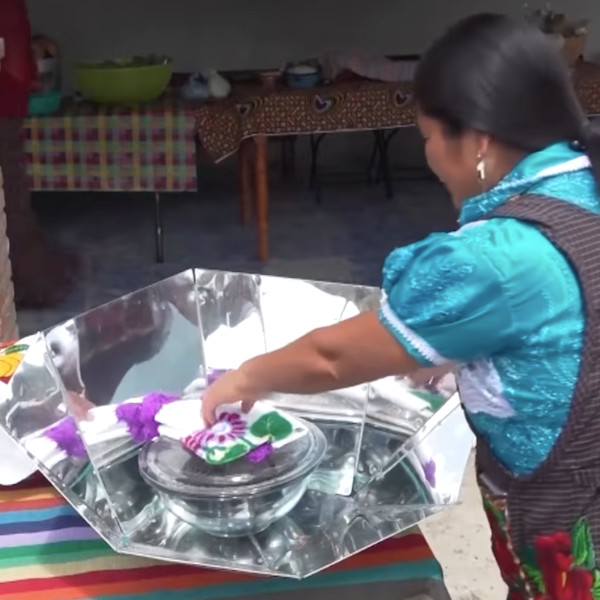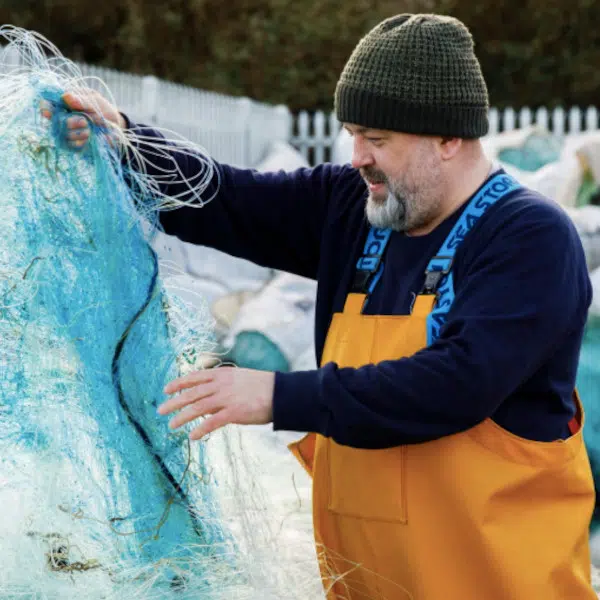The California pipevine swallowtail butterfly was once suffering a fate that so many creatures face—the loss of its habitat in San Francisco was causing their population to decline. But thanks to one man’s DIY efforts, the iridescent blue-winged insect is flourishing again. California Academy of Sciences aquatic biologist Tim Wong single-handedly revived the flailing species by building a home for them in his backyard. Now, over three years later, the stunning butterflies have slowly returned to the Golden Gate city.
Wong began his revitalization endeavor in his spare time. Having raised butterflies since elementary school, he researched the pipevine swallowtail and learned that it only feeds on the California pipevine plant—an especially-rare species of flora in the city. Wong finally discovered it at the San Francisco Botanical Garden, and they let him take a few clippings home.
Wong's DIY enclosure for the caterpillars.
 Early-stage pipevine caterpillars.
Early-stage pipevine caterpillars.
Wong then used self-taught techniques to create a place for the butterflies to thrive: a large screen enclosure to ensure their protection, which also doubled as a place for them to mate under natural outdoor environmental conditions.
“The specialized enclosure protects the butterflies from some predators,” Wong explained to Vox, “increases mating opportunities, and serves as a study environment to better understand the criteria female butterflies are looking for in their ideal host plant.”
 Late-growth-stage caterpillars.
Late-growth-stage caterpillars.
 The caterpillars once they're in the chrysalises stage.
The caterpillars once they're in the chrysalises stage.
Once his butterfly paradise was built, Wong transported 20 caterpillars to his backyard and let them loose on the California pipevine. He continues to raise them to this day. “They feed as a little army,” Wong said. “They roam around the pipevine plant from leaf to leaf, munching on it as a group.” After three to four weeks, the caterpillar pupates and forms an outer shell called a chrysalis. From there, it can develop into a butterfly in as little as two weeks or stay dormant for up to two years.
Since starting his butterfly reintroduction, Wong has successfully raised thousands of caterpillars and brought them to the San Francisco Botanical Gardens. “Each year since 2012, we’ve seen more butterflies surviving in the garden, flying around, laying eggs, successfully pupating, and emerge the following year,” he described. “That’s a good sign that our efforts are working!”
Full-grown California pipevine swallowtail butterflies.
Although we might not have the means or know-how to revive an entire butterfly species like Wong, there are still ways to help the creatures living around you. “Improving habitat for native fauna is something anyone can do,” Wong offered. “Conservation and stewardship can start in your very own backyard.”
Tim Wong: Instagram
via [Inhabitat, Vox]
All images via Tim Wong.























































































